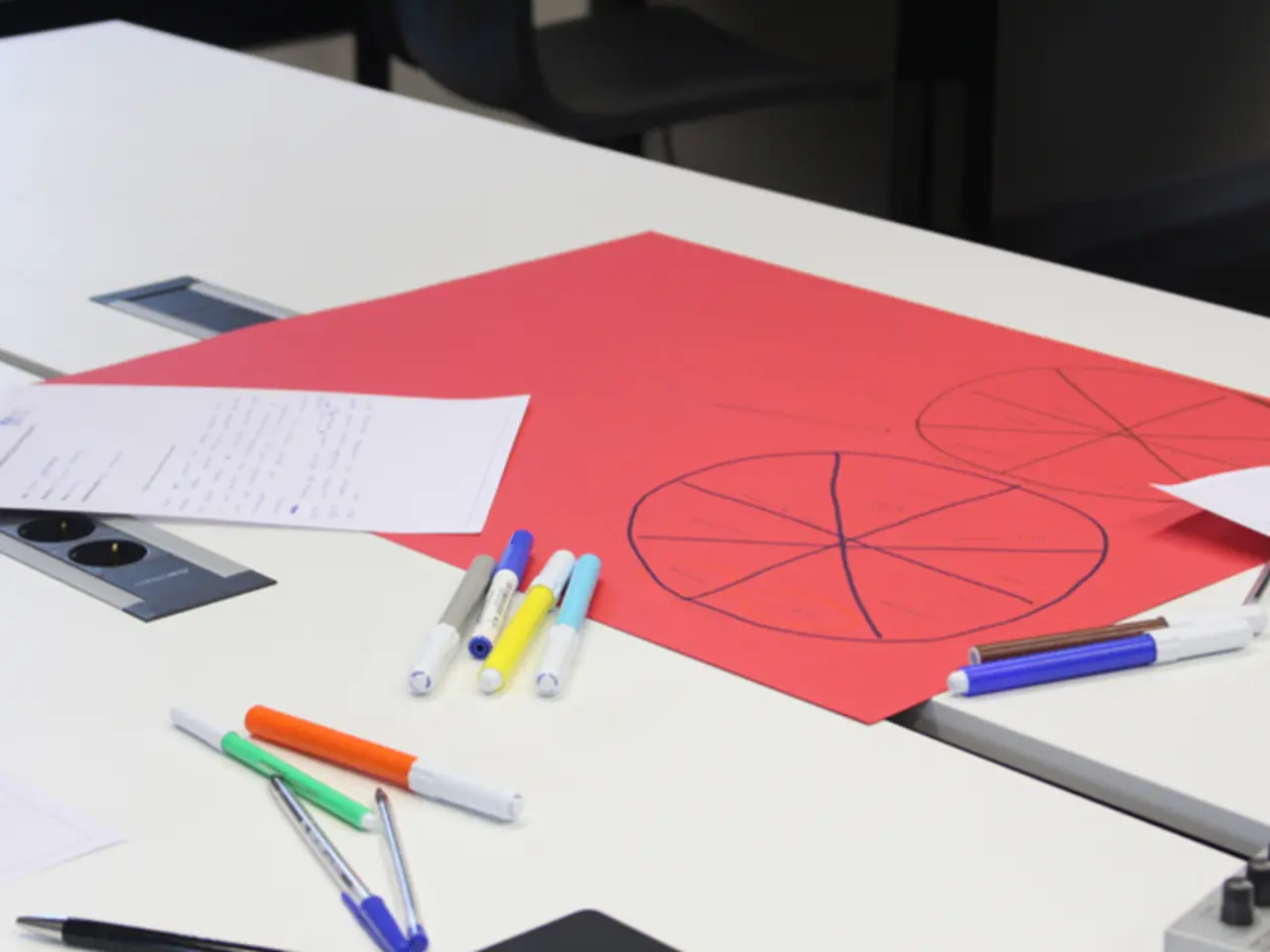Tracking Mental Exertion through Blood Oxygen Levels: Examining the Link
In the quest to optimize productivity, understanding cognitive effort has become a key focus for researchers. They study various tasks, ranging from light to heavy, such as mental arithmetic, n-back working memory tasks, or color word conflict tasks.
As one engages in these tasks, sensations of strain may be felt outside the head, including forehead warmth, jaw tension, and a subtle drive to switch to something easier. However, there are tools available to help manage these periods of increased cognitive effort. Consumer EEG headbands, like the Muse device, offer audio cues during brief attention exercises and help users recognize when their mind is steady and when it is wandering.
Inside the head, cortical regions responsible for attention, language, or memory recruit more resources. As cognitive demand rises, many tasks produce a larger bump in oxygenated hemoglobin in task-relevant regions. This process, known as neurovascular coupling, leads to an increase in oxygenated hemoglobin and a relative decrease in deoxygenated hemoglobin in the small vessels serving that region.
A simple self-monitoring toolkit includes rating perceived effort and quality at the end of each focused block, recording accuracy or a quick yes or no for whether the block reached its goal, and starting each block with ten breaths at a 4 and 6 pace and a tall, relaxed posture.
Week 1 of a four-week plan involves picking two daily focus blocks, rating perceived effort and quality after each block, and identifying the hour of the day when effort feels lightest. Week 2 introduces placing the most demanding task in the lightest hour, inserting a sensory reset between heavy items, and adding a short movement snack after lunch. Short, targeted breaks, such as looking out a window, drinking water, standing to stretch, and slow breathing, help reset the baseline of cognitive effort.
Week 3 introduces structured challenge tasks and tracking sleep timing and caffeine intake. Week 4 involves personalizing and automating the practices with the biggest impact, building a modest effort budget for the week ahead, and planning a small celebration for finishing strong.
Research laboratories, such as the Max Planck Institute for Human Cognitive and Brain Sciences in Germany, the Department of Neuroscience at the University of California, San Diego, and the Center for Neuroscience and Cognitive Systems at the Italian Institute of Technology, are at the forefront of investigating the connection between cognitive effort and blood acidosis during intense thinking.
fNIRS (functional Near-Infrared Spectroscopy) offers a practical trade-off: it is quieter, more portable, and friendly to real tasks at a desk. This technology uses gentle light at the scalp to estimate concentrations of oxygenated and deoxygenated hemoglobin in the outer layers of cortex. Combined with EEG (Electroencephalography), fNIRS provides a more complete picture of mental work.
Motivation, demand, and control form the basis of cognitive effort. Motivation is the reason one stays with a task, demand is the load a task places on working memory and attention, and control is the top-down guidance that helps one ignore distractions and correct errors.
Teams can also use cognitive effort management to shape meetings and deep work time, placing planning sessions earlier in the day and reserving late afternoons for lighter collaboration. By understanding and managing cognitive effort, individuals and teams can work smarter, not harder.
Read also:
- Nightly sweat episodes linked to GERD: Crucial insights explained
- Antitussives: List of Examples, Functions, Adverse Reactions, and Additional Details
- Asthma Diagnosis: Exploring FeNO Tests and Related Treatments
- Unfortunate Financial Disarray for a Family from California After an Expensive Emergency Room Visit with Their Burned Infant








